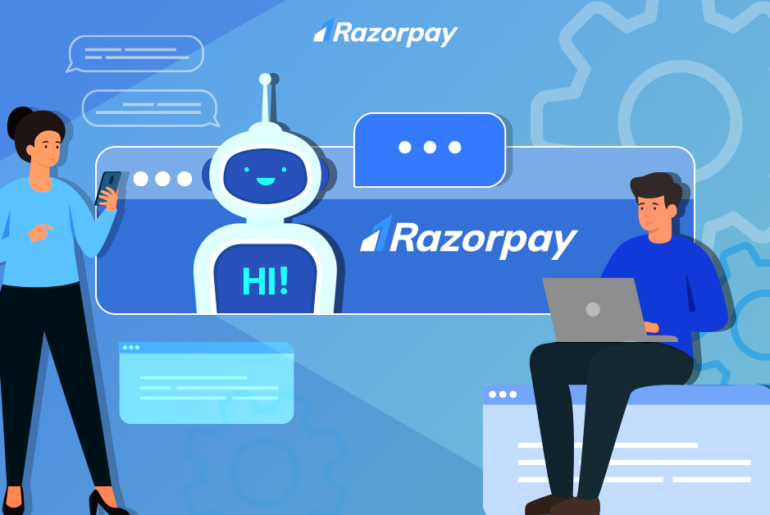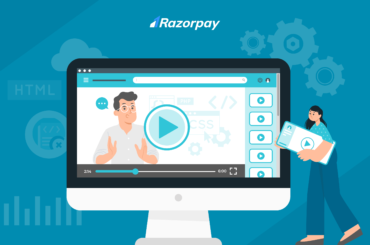Consider this scenario – you are looking for some specific information about home loans. Your bank website promised that the information is “just a click away”. You visit your bank’s website optimistically, only to realize there is so much information scattered all across the computer screen that leaves you clueless about where that “magical one click” is.
 Admit it, that we have all come across such scenarios. Be it travel and ticketing, banking, or e-commerce portals, we have all landed on websites that have too much information, leaving us more confused about where to find what we are looking for.
Admit it, that we have all come across such scenarios. Be it travel and ticketing, banking, or e-commerce portals, we have all landed on websites that have too much information, leaving us more confused about where to find what we are looking for.
A research paper published by Chao Liu and colleagues from the Microsoft Research team suggests that the average user spends between 10 and 20 seconds on a webpage to find information. Any number above that probably means that the website offers a near-excellent value proposition.
So, how do we deliver a ‘wow experience’ to users who spend as little as 10 seconds on our website? While a lot of this is to be addressed by the design, colour themes, and layout of the website, there are also other areas that can be looked at. So, is there really a way we can answer our user’s questions, and provide the information that they came looking for in ‘just-a-click’?
Yes, with a Chatbot.
What is a Chatbot?
Chatbots are computer programs designed to simulate human conversation. They use artificial intelligence (AI) and natural language processing (NLP) to understand and respond to user queries in a conversational manner.
The use of chatbots has become increasingly popular in recent years, with many companies using them as a means of interacting with customers and providing 24/7 support. In this article, we will discuss the history, types, benefits, and limitations of chatbots.
Is this a recent phenomenon?
Chatbots have been around for over half a century. The first chatbot, called ELIZA, was created by MIT professor Joseph Weizenbaum in 1966. ELIZA was designed to simulate a psychotherapist and was capable of engaging in a basic conversation with users. Since then, chatbots have evolved significantly, and today they are capable of providing a wide range of services, including customer support, sales, and even personal assistance.
How do they work?
There are two main types of chatbots: rule-based and AI-based. Rule-based chatbots are programmed to respond to specific keywords or phrases. For example, a rule-based chatbot for a pizza restaurant may be programmed to respond to queries about menu items, prices, and delivery times. Rule-based chatbots are limited in their capabilities and can only respond to predetermined inputs.
AI-based chatbots, on the other hand, use natural language processing (NLP) to understand and respond to user queries in a conversational manner. These chatbots are trained using machine learning algorithms and can learn from past interactions with users to improve their responses over time. AI-based chatbots are much more sophisticated than rule-based chatbots and are capable of providing a wide range of services.
How can they benefit my organisation?
There are several benefits of using chatbots, including:
- Improved customer service: Chatbots can provide 24/7 support, allowing customers to get the assistance they need at any time.
- Increased efficiency: Chatbots can handle multiple customer queries at once, freeing up human agents to focus on more complex tasks.
- Cost-effective: Chatbots can be more cost-effective than human agents, as they can handle a large volume of queries without requiring additional staff.
- Personalisation: AI-based chatbots can learn from past interactions with customers and provide personalized recommendations and solutions.
- Scalability: Chatbots can handle an unlimited number of users simultaneously, making them an ideal solution for businesses with a large customer base.
Oh! Is this a one-time investment that requires no maintenance?
No, not really! While chatbots have many benefits, they also have some limitations.
First of all, they have limited capabilities. Particularly true with rule-based chatbots that can only respond to predetermined inputs, and is almost useless when queried on any term that is not a part of its database. AI-based chatbots, although a little more engaging than rule-based chatbots, can only respond to queries they have been trained on.
Chatbots are also incapable of handling complex queries. Chatbots may struggle with complex queries that require human-level reasoning and problem-solving skills.
One major drawback is that chatbots lack human emotions and may struggle to provide the same level of empathy and understanding as human agents would. Chatbots definitely require periodic maintenance and training to ensure they are providing accurate and up-to-date information to users. Chatbots collect and store user data, which may raise privacy concerns for some users.
Who can use chatbots?
Chatbots can be used in a wide range of applications, including:
Customer support: Chatbots can provide 24/7 support to customers, answering common queries and providing solutions to common problems.
Sales: Chatbots can be used to guide customers through the sales process, providing product recommendations and answering questions about products.
Personal assistance: Chatbots can be used as personal assistants, helping users with tasks such as scheduling appointments and setting reminders.
Education: Chatbots can serve as a huge repository of information for students and teachers, alike.
Conclusion
‘Customer Satisfaction’ is history. In the present day, organisations are striving for what is called ‘Customer Delight’. Gone are those days when users would patiently (or impatiently!) wait for a ‘Support Agent’ to join the chat or call to have their issues resolved. Such lax now will hurt your customer base. Why not use AI to our advantage here? According to a paper published by IBM about chatbots, chatbots can be used to answer more than 80% of a user’s routine questions, cutting customer service costs by more than 30%. This also means that a customer whose query has been satisfactorily answered is more likely to give a positive review. No surprise then – a research has indicated that websites with an integrated chatbot have scored an average of 82% satisfaction rate, as per the latest B2B chatbot stats.
With so much data available about its effectiveness, no wonder companies are investing in chatbots to up their game. From real estate to furniture recommendations, chatbots are being used to answer common customer queries easily.
We, at Razorpay have realised the potential and now, there is a dedicated team working to put this together. Watch this space, we will bring the Razorpay Chatbot story in the near future.




